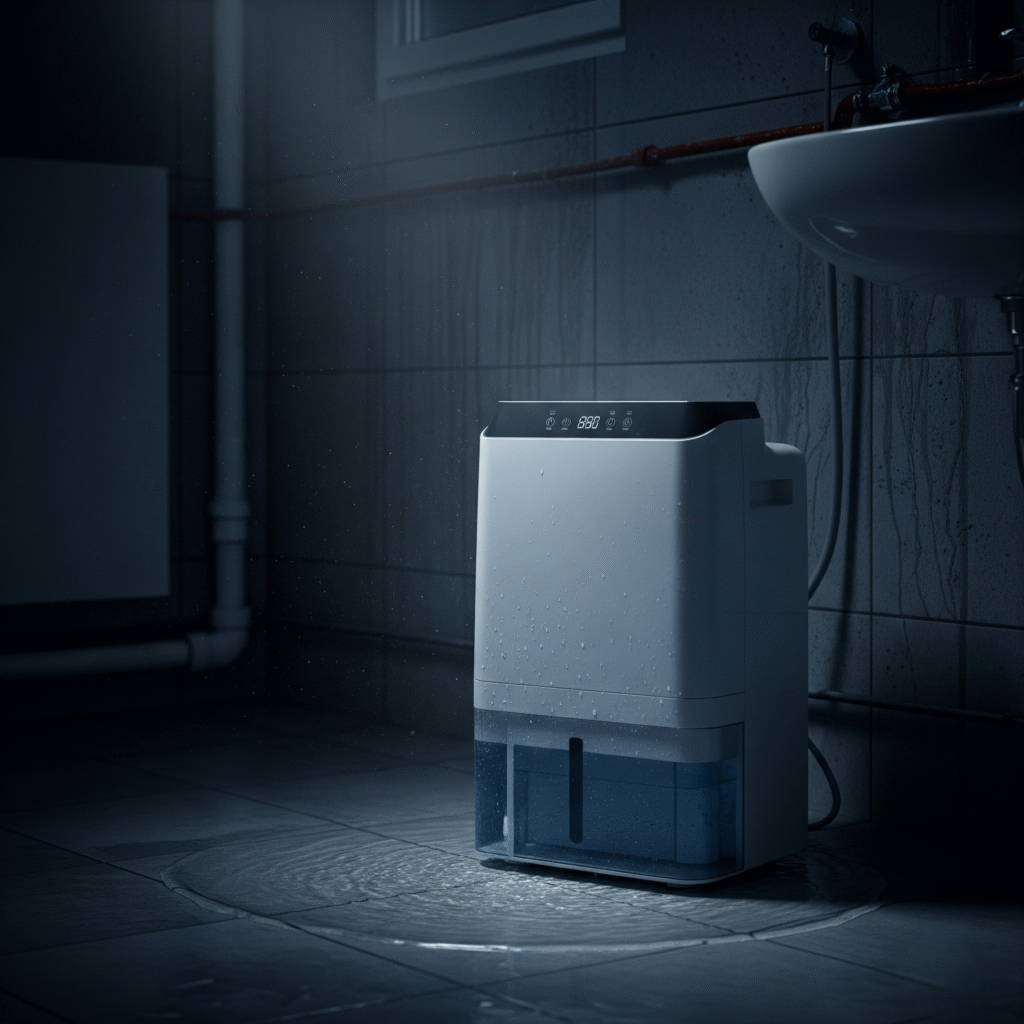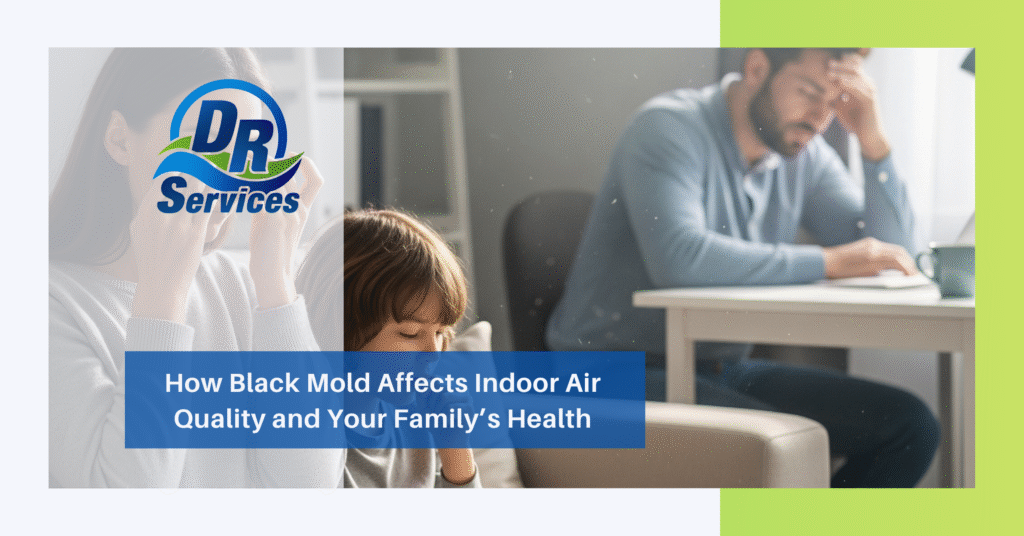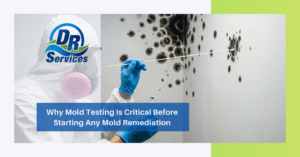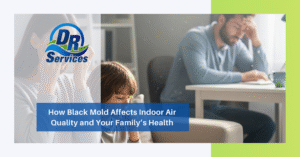Black mold isn’t just an unsightly stain on your walls; it’s a hidden danger that can seriously impact indoor air quality and harm your family’s health. Known scientifically as Stachybotrys chartarum, black mold thrives in damp, poorly ventilated spaces and releases tiny spores into the air. These spores carry toxins that can cause a range of health problems, from mild allergy-like symptoms to severe respiratory issues. Let’s explore how black mold develops, why it affects indoor air, and what you can do to protect your home.
What Is Black Mold and Why Is It Dangerous?
Black mold is a type of toxic mold commonly found in places with:
- Water leaks
- High humidity
- Poor ventilation
It’s dark green or black and often has a musty smell. What makes black mold particularly dangerous isn’t just the mold itself, but the mycotoxins it produces. These toxins can stay airborne, contaminating the air your family breathes.
How Black Mold Affects Indoor Air Quality
When black mold grows, it releases microscopic spores and mycotoxins into the air. Here’s what happens:
- Airborne spores spread quickly: They can settle in other damp areas, causing mold to spread.
- Mycotoxins lower air quality: These toxins contaminate the air, making it unsafe, especially in poorly ventilated rooms.
- Lingering musty odor: Mold growth often causes an unpleasant smell, another sign of compromised indoor air.
Poor indoor air quality due to black mold can trigger health problems, especially in children, seniors, and anyone with allergies or asthma.
Health Risks of Black Mold Exposure
Allergy Symptoms
Even low-level exposure to black mold spores can cause:
- Sneezing
- Itchy or watery eyes
- Nasal congestion
- Skin rashes
Respiratory Issues
For people with asthma or other lung conditions, black mold can:
- Trigger asthma attacks
- Causes chronic coughing
- Lead to wheezing and shortness of breath

More Severe Reactions
Long-term or high-level exposure can lead to:
- Chronic sinus infections
- Fatigue and headaches
- Difficulty concentrating
- In rare cases, lung infections in people with weakened immune systems
Who’s Most at Risk?
Black mold affects everyone differently, but it’s especially dangerous for:
- Infants and children
- Seniors
- Pregnant women
- People with allergies, asthma, or weakened immune systems
These groups may experience stronger symptoms or complications from prolonged exposure.
How to Spot Signs of Black Mold Indoors
Look for:
- Dark patches on walls, ceilings, or behind furniture
- Persistent musty smell
- Increased allergy symptoms at home but not elsewhere
- Peeling paint or water stains
Mold often hides behind drywall, under carpets, or inside HVAC ducts, so visible signs may be just the tip of the problem.
Why Quick Action Matters
The longer black mold remains:
- The more spores it releases, the worse the air quality.
- The deeper it penetrates building materials, making removal harder and costlier.
- The higher the health risk for your family.
Early detection and remediation are key to keeping your home safe.
How to Improve Indoor Air Quality After Mold Exposure
Remove Mold Safely
- Small areas: Clean with a mold-specific cleaner and wear gloves and an N95 mask.
- Larger infestations: Call professional mold remediation experts to prevent spores from spreading.
Increase Ventilation
- Use exhaust fans in bathrooms and kitchens.
- Open windows when the weather allows.
- Use air purifiers with HEPA filters to trap mold spores.
Control Humidity
- Keep indoor humidity between 30 and 50%.
- Use dehumidifiers in basements and damp areas.
- Fix leaks immediately.

Prevention Tips: Keep Mold Out for Good
Here are some preventive measures:
- Inspect your home regularly for leaks or dampness.
- Clean and dry spills quickly.
- Maintain your HVAC system and change filters regularly.
- Store items off the basement floors and away from the walls to allow airflow.
Professional Mold Remediation: When You Need It
If:
- The mold covers more than 10 square feet
- It keeps returning despite cleaning
- Family members have severe allergies or asthma
… it’s best to call certified professionals. They have the tools and protective gear to remove mold thoroughly and safely.
Conclusion: Breathe Easier at Home
Black mold isn’t just a cosmetic problem; it’s a real threat to indoor air quality and family health. By understanding what causes black mold, recognizing early signs, and taking action to remove it and control moisture, you can create a cleaner, healthier living space for everyone.
Protect your home, improve air quality, and keep your family safe by staying proactive about mold prevention. Contact us today!





